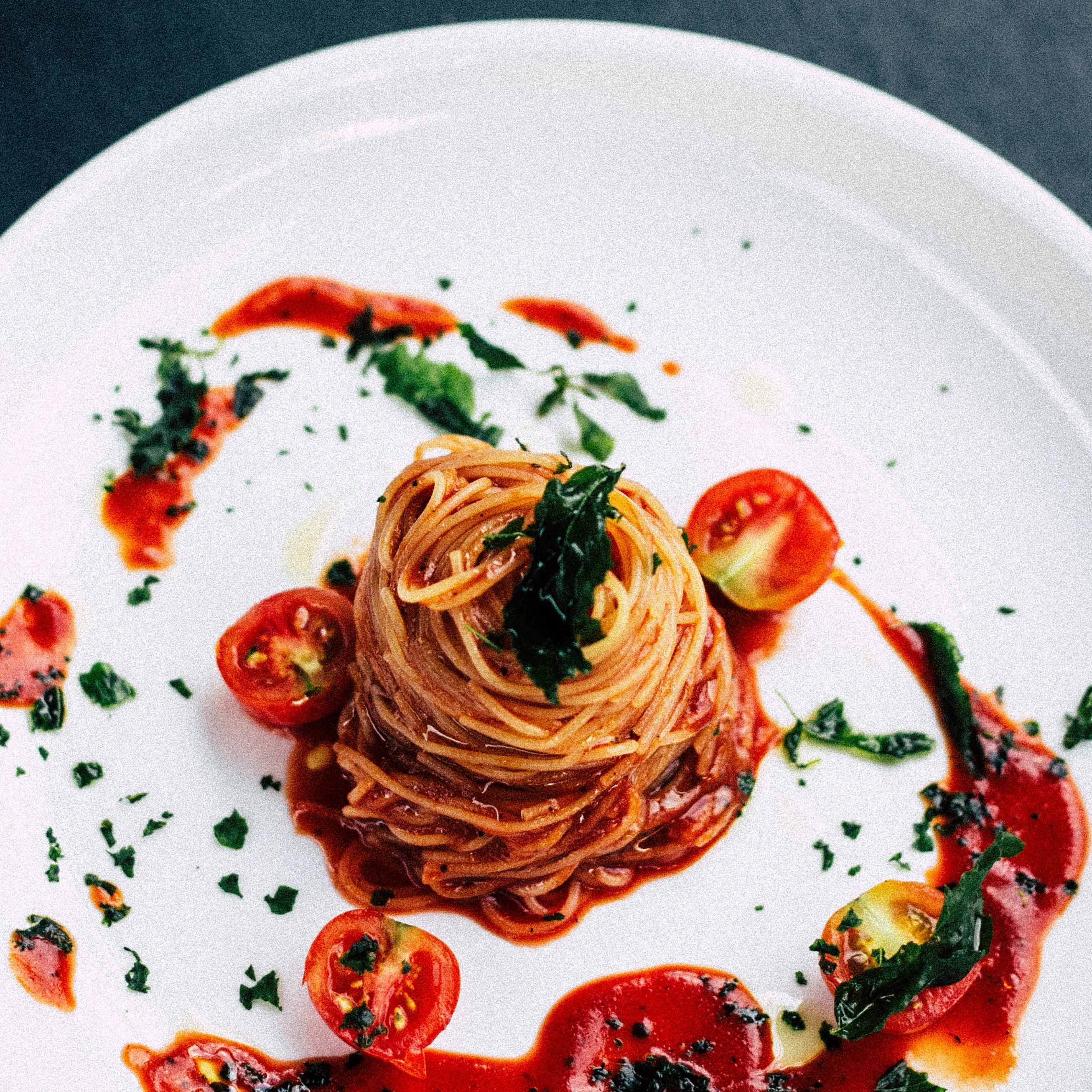Blog
Food / Love / Pasta
Spicy Arrabbiata Recipe

How to make pasta without a machine
How do you make pasta from scratch?
Well, it’s a two part process. First you must make the dough. Then, after a rest period, you will then roll it out and cut it to your desired shape. You can use the rolled dough to make lasagna sheets, ravioli, linguini, etc.
Once the pasta is rolled and cut, you then have three choices. You can throw it in a pot of salted boiling water for a few minutes to eat it. If you don’t plan on eating all of it right away, you can store it in an air tight container in the refrigerator or the freezer. Or, finally, you can hang your pasta on a drying rack.
What kind of flour is used to make pasta?
Well, my pasta dough consists of olive oil, water, eggs, and equal parts all-purpose flour and semolina flour. I’ve made pasta using only all-purpose flour before and thought it was too doughy.
The semolina gives the pasta more bite. It adds to the taste and the texture. You can, of course, only use semolina, but I find that the combination of the two flours yields a dough that is easy to work with and tastes great.
How do you make fresh pasta dough?
Once you combine all of the ingredients, you have to knead the dough. You can most certainly knead the dough by hand, but it is a physically demanding process that will work your biceps for at least ten minutes. Pasta dough is not as soft as bread dough, so you’d be in for a workout.
If you have a stand mixer, you can easily knead the dough with the dough hook. If not, knead the dough on a well floured surface.
If the dough is too sticky, add a bit more semolina flour into it forms into a ball. Likewise, if the dough is too dry to come together, add water by the tablespoonful until it comes together.
You know the dough is ready when there is elasticity. To test, stick your knuckle into the dough. It should slowly push back. If you create an indentation and the dough just stays, you need to continue kneading.
Next, you’ll just need to cover your dough, either with plastic wrap or a towel, and let it rest at least 30 minutes. This is what allows the gluten to form which will give your pasta the chew it needs.

How to make homemade pasta
How do you make homemade pasta without a machine?
I’m not going to lie. I highly recommend using a pasta roller, but I’ll explain how to do it by hand in case you don’t have one.
To roll out pasta by hand, simply divide the dough into chunks. Using a dough cutter will make this step even easier. Ensure you’re working with enough all-purpose flour on your surface and roller to keep things from sticking. Roll out the dough much like you would a pie crust. The goal, however, is to create long sheets that are about an 1/8 inch thick.
Once the sheets are rolled out into long and thin sheets, you can slice the dough into noodles. I recommend using a clean straight edge, like a ruler, otherwise you might get very funny shaped pasta.
Tips for using a pasta roller:
The same process works whether you use a hand roller or the KitchenAid attachment. I actually have the Atlas hand roller and highly recommend it. There’s just something fun about cranking the pasta through manually.
Working with small pieces of well-floured dough, send through the roller on the widest setting. Fold the dough into thirds and send it back through with the folded ends on the sides. Do this one more time and send it through the widest setting. The reason you do this is to get a pasta sheet with straight edges so there’s little waste when you cut.
Continue to work the dough through the roller, rotating the dial each time to make the pasta sheet thinner and thinner. Ensure your dough always has enough flour so that it doesn’t stick to your roller.
I usually go to the thickness setting of 5, but you can choose how thick or how thin you want your pasta.
Once you have your sheet, you can then make your own ravioli or lasagna. Again, having the right tools helps, so if you’re making ravioli I recommend using a ravioli press. If you plan to cut spaghetti or linguine noodles, send the pasta through the cutting side.
Ensure each of the noodles are well covered in flour so they don’t stick. You can’t go overboard here because it will all come off when you cook the pasta.